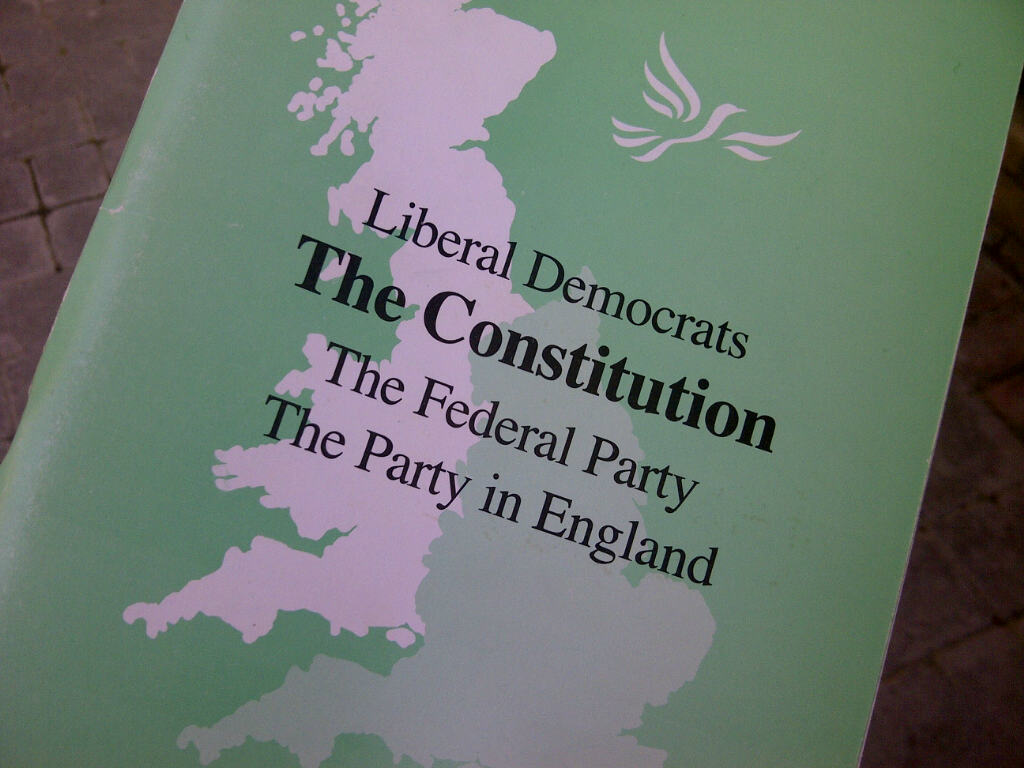The Federal Executive’s unconstitutional behaviour

In the last edition of Liberal Democrat Newswire, I reported on the quiet change made by the Federal Executive (FE) to the rules for election to the party’s federal committees, introducing a new requirement that at least half of the elected posts must be filled by women.
The change has been introduced in a very low-key way, with the only official communication from the party so far being a reference on page 22 of the ‘Reports to Conference’ booklet, and despite nominations having already opened for the contest on 15 September.
However, the bigger procedural controversy over this change is whether or not the Federal Executive really has the power under the party’s constitution to make it unilaterally, rather than putting a proposal to conference to be voted on in the usual way.
Looking at the powers the FE is given and the timing of their decision, the situation is pretty clear: no, it doesn’t.
Moreover, the FE has failed to take action on the question of whether any other quotas, such as to improve the ethnic diversity of party committees, should be introduced – and by setting the gender quota so high in fact (looking at the records of previous committee elections) risks making them even more ethnically un-representative than at the moment.
Finally, the FE has removed the provision that applied to previous quota rules, namely that there have to be enough candidates nominated of a specific gender to give voters meaningful choice amongst those candidates in order for that gender quota to apply.
Hence this emergency business motion being submitted to conference, which I’ve put my name to, which both makes sure that it is conference who decides on the matter and also would ensure that the FE properly considers the full range of issues before a future constitutional amendment:
The FE’s unconstitutional behaviour and gender quotas for committee elections
Conference notes that in 2012 conference amended the constitution:
- To remove the requirement that at least one third of the directly elected members of federal committees be female and at least one third male, in the light of advice that these provisions were incompatible with the Equality Act 2010; and
- To give the Federal Executive powers to impose a gender quota in the short term should the Equality Act be amended too near a conference for a new constitutional amendment to be submitted.
Conference further notes:
- That although the Equality Act has not been amended, recent guidance has suggested that gender quotas for committee elections are permissible, and the Federal Executive has accordingly decided to apply a 50 per cent quota for women (only) to the 2014 elections for the directly elected members of the federal committees.
- That this decision was taken in principle by the Federal Executive’s working group in September 2013, and in its final form by the Federal Executive on 14 July 2014, two days before the deadline for the submission of constitutional amendments to the autumn 2014 conference.
- That although there is no reason why the FE could not have acted as previously instructed by conference and brought a constitutional amendment to this conference, and possibly to the spring 2014 conference, it failed to do so.
Conference accordingly censures the Federal Executive for:
- Acting outside its powers under the constitutional amendment passed in 2012.
- Taking a decision affecting the composition of the committees elected by conference without giving conference a chance to debate and amend it when it could easily have done so.
Conference believes that as a matter of constitutional procedure and of political principle, decisions affecting the composition of the party’s committees should be made by conference.
Conference rejects that section of the Federal Executive report dealing with gender quotas for committee elections.
Conference nevertheless supports the principle of gender quotas and resolves to introduce for the directly elected components of all committees and other bodies elected by conference representatives in 2014 the following provision:
Either Option A
Not less than one third or, if one third is not a whole number, the whole number nearest to but not exceeding one third (‘the specified number’) shall be men and women respectively, provided that there is at least twice the specified number of male and female candidates respectively validly nominated by the close of nominations.
Or Option B
Not less than one half or, if one half is not a whole number, the whole number nearest to but not exceeding one half (‘the specified number’) shall be men and women respectively, provided that there is at least twice the specified number of male and female candidates respectively validly nominated by the close of nominations.
Or Option C
Not less than one half (‘the specified number’) shall be women, provided that there is at least twice the specified number of female candidates validly nominated by the close of nominations.
Conference instructs the Federal Executive to consult fully within the party, and then submit a properly written constitutional amendment to a conference before the 2016 round of committee elections, to enable conference to debate arrangements for gender and any other quotas for future elections.
If you are a voting conference representative and would like to support this emergency motion, please let Duncan Brack and myself know by emailing your name, membership number and local party to mark.pack@gmail.com.
Note: I will be re-standing for election to one of these committees, the Federal Policy Committee.
Leave a Reply